Have you ever looked at your electricity bill and wondered whether or not you are paying a fair price? Every energy consumer wants an electricity plan with fair terms, a low rate, and clear pricing (no hidden charges). Energy deregulation in Texas has given Texans the freedom to choose their electricity provider. This, in turn, has contributed to increased competition among Texas electricity providers leading to competitive electricity prices, improved quality of service, and new and innovative electricity plans.
Even so, finding the lowest energy rates in Texas is still an uphill task. This is because there are so many electricity providers with impressive electricity rates. This means that you will need to sift through dozens of electricity plans to find one with the lowest rate. You can use Power To Choose, a website that was formed by the Public Utility Commission of Texas (PUCT), to help electricity consumers to identify and compare electricity rates within their locality. All you need to do is to enter your zip code and you will be provided with a list of energy companies (with their plans and rates) to choose from.
There are several things that you will need to consider when shopping for the lowest electricity rates in Texas. Below is a step by step process to help you identify the best electricity plan for you.
Step 1: Determine how much power you consume every month
The first step in identifying the cheapest or the best energy plan is to establish your monthly average electricity consumption rate (monthly usage). To do this, you will have to calculate your average electricity consumption rate for the past three or more months. If you are living in an apartment, your electricity usage is likely to be within 500 kilowatt-hours per month on average. On the other hand, if you are staying in a bigger family house, your energy usage rate will probably be around 2000 kWh or even more.
The Public Utility Commission of Texas stipulates that every energy provider in Texas has to display their average rate for every energy plan they sell on three standard categorized usage levels i.e., 500 kWh, 1000 kWh, and 2000 kWh.
Step 2: What’s your usage rate during the spring and summer period
The next step is to identify your electricity usage range. This is a critical step because Texas electricity plans have different rates for the three standard usage levels. Note that your electricity rate may vary every month depending on your electricity usage rate. This applies even in fixed-rate plans.
Step 3: Identify an energy plan that is ideal at your consumption level
Once you have your average monthly consumption rate in mind, enter your zip code to access the list of electricity providers, together with their plans and rates in your locality. Ensure that you choose your home size for you to see the rates based on your consumption rate. Usually, the default displayed rates are for the 1000 kWh usage rate. For you to check the rates for the 500 kWh and 2000 kWh, you will have to click on the drop-down menu and choose the usage category you belong to.
Step 4: Check the rates for all the three categories in an electricity plan
This is another vital step that most consumers either miss or ignore. If the rate difference between the three standard usage rates (500 kWh, 1000 kWh, 2000 kWh) is huge, then this is not the best plan for you. You see, your electricity consumption will vary depending on seasons. Most Texas residents consume a lot of electricity during summer compared to spring. Therefore, you don’t want to have an electricity plan that offers a good rate for the 1000 kWh usage level, but an extremely higher rate for the 2000 kWh usage level, which is likely to be your usage range during summer.
Instead, you need an electricity plan that offers a fair rate for all three usage levels. It should have a balanced rate across all three categories which could mean a slightly higher rate for the 1000 kWh usage level. By doing so, you’ll end up paying a relatively lower amount of money for your electricity usage per year.
Step 5: Subscribe to the plan
Once you are satisfied with the rates offered you can then go ahead purchase the plan.
Types of electricity plans
There are different types of energy plans in Texas, e.g. prepaid plans, fixed-rate, variable energy plans, and green or renewable energy plans. All of these plans have varied prices which can also change depending on the market forces. The majority of electricity plans in Texas that have the cheapest rate are the ones with a fixed rate.
Variable-rate plans: Variable rates as the name suggests are electricity plans whose rate changes every month depending on the situation on the energy market. These changes can happen unexpectedly, which means that your electricity rate is fully dependent on the market forces e.g changes in energy demand and supply, oil prices among others.
Fixed-rate plans: This type of electricity plan offers a constant rate per kWh (depending on your usage level) for as long as the agreement is valid. The only time the rate can change is when there is a change in delivery cost or a change in energy regulation. Fixed-rate plans are the most popular among Texas residents.
Renewable or Green Energy plans: Some renewable energy plans have incentives and offers that make their prices affordable. There are many energy providers who offer 100 percent green energy at affordable prices
Free (weekends and nights) electricity plans; are plans that offer free electricity during weekends and at night. This can be a good deal for homeowners whose electricity usage is higher during the weekends and nights than during the day. It is however not recommended if your consumption rate is higher during the day. This is because the free offer is compensated by the high rates during the non-free period.
Bill credits or Tiered plans: When choosing this type of energy plan, you need to be very cautious as its rates are based on your consumption level. This means that if your usage rate drops or goes beyond the agreed usage level, you’ll pay more than you had planned for.
Prepaid plans: Instead of paying your entire electricity bill at the end of the month based on usage, prepaid electricity plans allow customers to pay in advance. Also called pay-as-you-go electricity, customers have flexibility to deposit funds at their convenience to keep a positive balance. Most traditional postpaid plans require a credit check and hefty deposit to connect. Payless Power’s prepaid plans, however, require only a minimal connection fee that goes directly toward the cost of electricity and no credit check.
Additional charges and hidden fees
An important factor to consider when looking for the cheapest electricity rates is the additional charges. Note that not all rates are what they appear to be and therefore it is prudent that you read through the fine print. Some companies have clauses within the fine print that allows them to change rates if you don’t meet certain terms. You would want to know what exactly you are paying for and whether the good rates offered have strings attached.
Most hidden charges are mysterious – there is no clear explanation as to what exactly you are paying for and hence the reason why they are referred to as hidden. As for the additional charges, these are extra payments apart from the standard charge i.e., electricity and delivery charges. They are not necessarily a bad thing but they are not made known to you the way they do with standard charges before you sign the contract. However, they’ve been mentioned in the fine print.
What is a good rate per kWh in Texas?
According to the U.S Energy Information Administration (EIA), the average commercial and residential electricity price in Texas is 7.78 cents per kilowatt-hour and 11.74 cents per kWh respectively. Therefore, a good rate per kilowatt-hour is within the average rate. There are quite a number of energy providers whose rates are below the state’s average. In recent months, some electricity providers in Texas have dropped their rates to around 5 to 7 cents per kilowatt-hour.
Factors that determine a good rate
Electricity rates change every day. A company that has a good rate today might not be the best one tomorrow. This is because there are factors in play that have an impact on electricity prices. In some circumstances, the customers can have a say on the rates used to calculate their overall electricity bill, while in others they have limited to no control over the rate.
Some of the factors that cause the frequent change in energy rates are as follows;
Transmission and distribution; For electricity to be transmitted to homes and businesses, it requires some transmission equipment that is usually provided by utility companies. These pieces of equipment need maintenance, repairs, and occasional upgrades which cost money. In order for all these to be achieved, the maintenance cost is factored in the electricity rates. So, the higher the cost of transmission, the higher the rates.
Geographical Location; As stated earlier, electricity rates vary from place to place and city to city. A supplier offering the same service with the same energy plan in San Antonio and Austin might not be offering the same rate in the two places. This is because of the difference in population size, cost of fuel, ease of transportation, taxation, among other factors.
Fuel cost: Power plants depend on fuel to produce electricity. Therefore, an increase or decrease in fuel costs will have an impact on electricity rates. For example, if the cost of fuel increases significantly, the energy producers will have to adjust the prices to meet their cost of production, which ultimately means an increase in electricity rates.
Policies and regulations: Most states have some common policies and regulations that govern different operations within the states. However, some policies are different and a good example are the policies on the generation and distribution of electricity. Some states have adopted the energy deregulation policy while others have a regulated energy policy. In Texas, it’s a bit of both where some cities have a deregulated energy system while others still have a regulated energy policy. This difference in electricity policies and regulations has an impact on electricity price and is one of the contributing factors for the different rates.
Examples of good energy rates in Texas
Energy deregulation in Texas has increased competition in the energy market, driving down energy prices. However, parts of Texas are still under federal energy regulation. If you are shopping for the right electricity plan, you need to determine first if your new home is in a deregulated area.
Discover affordable energy rates by comparing plans available in your zip code, whether traditional or postpaid electricity. Fixed-rate plans provide predictable pricing, plus flexible payment scheduling for customers. Month-to-plan plans offer flexibility for those moving to a new home or deciding what plan is best for them. As you search for a pay-as-you-go prepaid plan, you can compare the rates of all the plans from a variety of providers. Payless Power has consistently been rated as a top Texas provider of prepaid electricity, with affordable, transparent pricing and quality customer support.
Who has the best electricity rates in Texas?
Electricity rates are never constant. An electricity plan, offered across multiple cities by the same energy supplier with the same structure and package, may have different rates amongst cities. This is because the factors affecting electricity rates are unique in each city. Also, the best rates depend on the type of electricity plan being offered. For instance, a company might be the best for the long term (36 months) fixed-rate plan, while another might have the best rate for a prepaid plan and so on.
Therefore, to identify an energy company that offers the best rates in Texas, you’ll need to study its performance across months while comparing it with other companies offering a similar type of plan.
This may sound difficult and cumbersome, but with Texas energy charts, you can easily compare electricity rates across different plans and companies over a certain period of time. You can also check the trends of when the rates are at their peak and when they are at their lowest. Additionally, it enables you to discern whether the rate you are on or the one you intend to switch to, is a good rate or not. You can find this energy chart on most electricity plan comparison websites.




